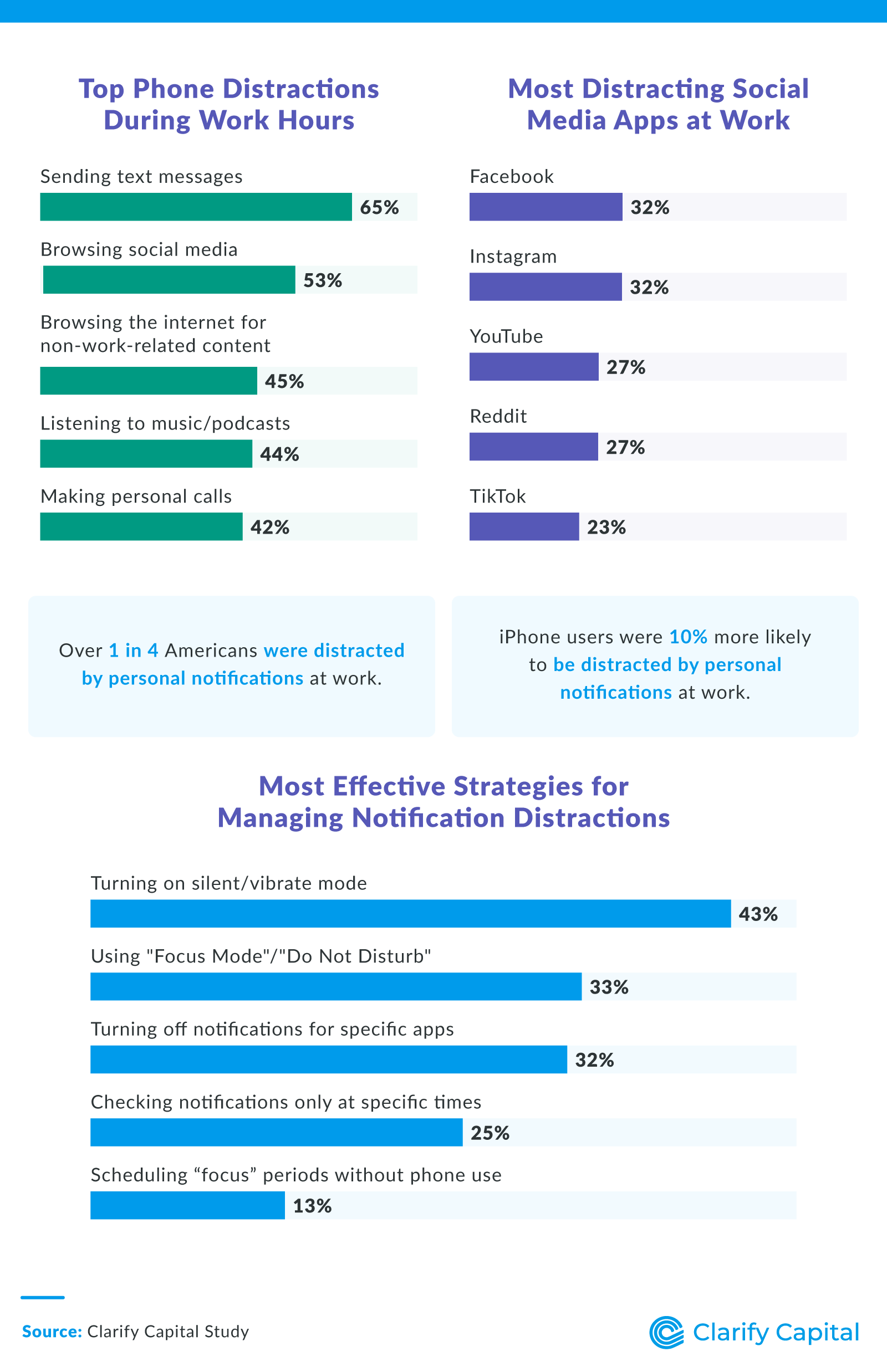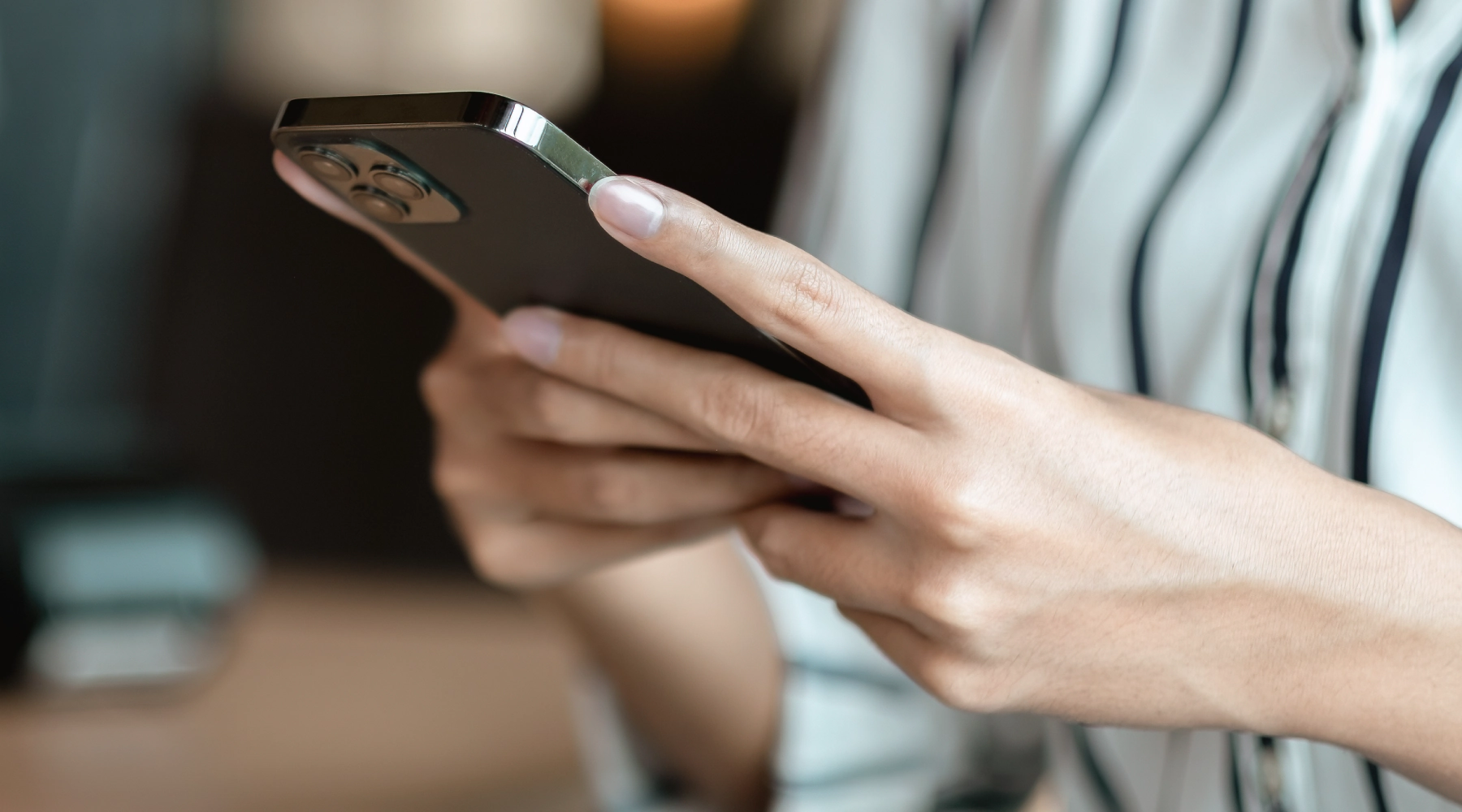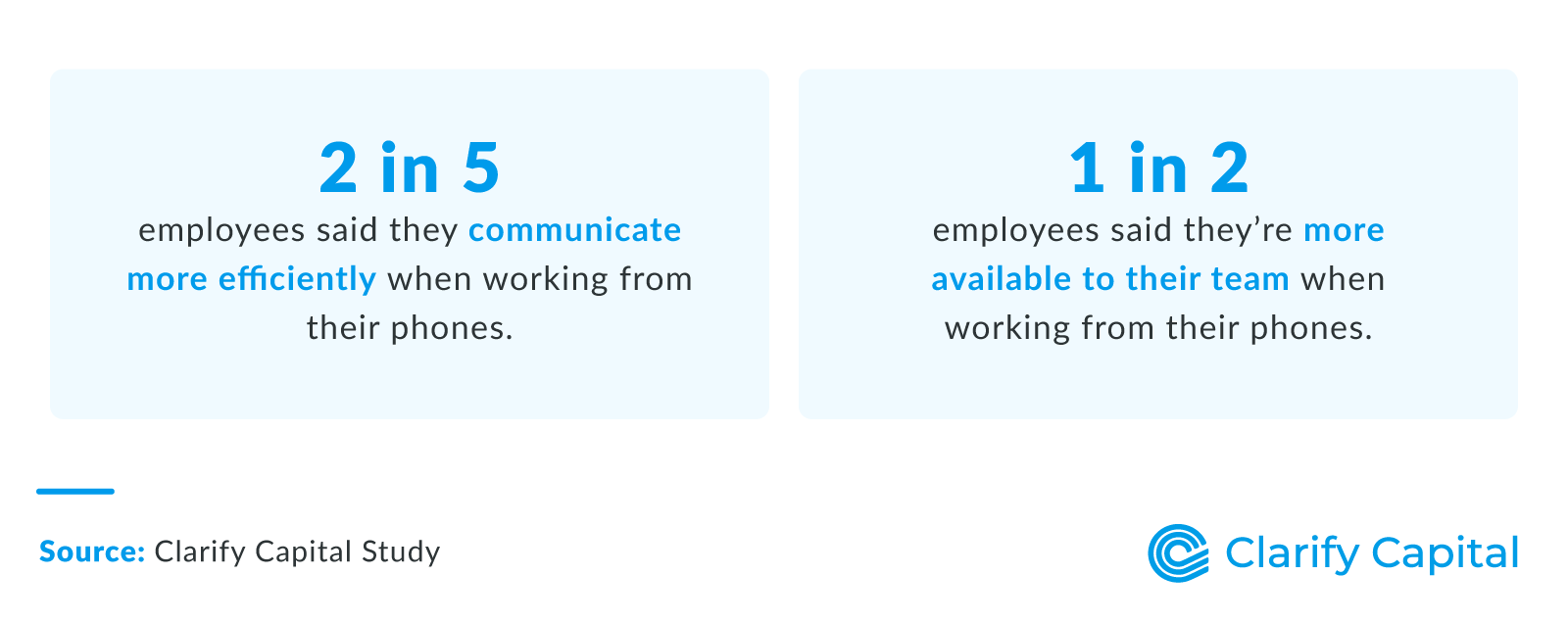Key Takeaways:
3 in 4 Americans spend an average of 2 hours a day working from their phones.
1 in 4 Americans say their work quality is just as good on mobile as it is on a computer.
13% of Americans have closed a major deal while working from their phone.
77% of iPhone users work from their phones.
1 in 4 Americans would consider an all-mobile work setup.
Nearly 1 in 5 tech professionals work from their phones.
Mobile Work: A Growing Trend in the Workplace
Working from a phone is becoming more common, and mobile devices are often a major part of how employees do their jobs.

Mobile phones have become indispensable for work, with 3 in 4 Americans working from their phones and spending an average of 2 hours daily on mobile work tasks.
Among these workers, 77% of iPhone users and 73% of Android users work on their devices. Generationally, Gen Z led, with nearly 70% using their phones for work. Industry trends also showed that about 1 in 5 tech professionals rely on their phones for work tasks.
For some, mobile devices are more than a supplement to traditional tools. A quarter of Americans said their work quality is just as good on mobile as on a computer, and 1 in 4 would even consider an all-mobile work setup.
Phones are not just for small tasks, either. Around 13% of Americans have closed a major deal while working from their phones, and 10% have even led a training or onboarding session using their devices. However, some respondents reported that working on a phone comes with challenges, such as:
Screen size or readability issues (55%)
Limited app functionality compared to desktop (41%)
Difficulty accessing or editing certain documents/files (40%)
Typing or input difficulties (40%)

Difficulty multitasking or switching between apps (40%)
Shifting Attitudes Toward Phone Use at Work
Although attitudes toward phone use at work are changing, distractions and challenges like work-life balance still make mobile productivity a mixed bag for many.

The perception of phone use in the workplace has shifted dramatically, with 3 in 4 Americans no longer viewing it as taboo. However, over 30% of Gen Z said they still believe using a phone at work is frowned upon.
While mobile phones are increasingly accepted as a work tool, they also come with distractions that can affect productivity. Personal notifications have disrupted 1 in 5 iPhone users at work, compared to 1 in 6 Android users. Despite these interruptions, Android users were over 20% more likely than iPhone users to consider transitioning to an all-mobile work setup.
Mobile work has also blurred the lines between personal and professional life. Nearly 7 in 10 Americans (68%) said working from their phone makes it harder to disconnect during personal time. This highlights the growing need for better boundaries as mobile work becomes more common.
The Future of Work on Our Phones
Mobile phones are changing the way we work, making it easier to stay connected and get things done from anywhere. But they also come with challenges, like staying focused and setting boundaries between work and personal time. As mobile work becomes the norm, finding ways to tackle these issues will be essential to making sure phones help us work smarter — not harder.
Methodology
We surveyed 1,000 working Americans to uncover the impact of mobile device usage on workplace productivity. The average age was 38; 48% of respondents were women, 51% were male, and 1% were non-binary. Generationally, 4% were baby boomers, 23% were Gen X, 58% were millennials, and 16% were Gen Z.
About Clarify Capital
Clarify Capital gives financial backing to small businesses, offering up to $5 million in no-doc business loans and fast business loans with competitive rates and quick processing times. We personalize the lending experience and help entrepreneurs advance their business goals.
Fair Use Statement
We encourage you to share these findings with your audience to spark discussions about the role of mobile devices in the workplace. Please ensure any sharing is for noncommercial use and includes a link back to this page.

Emma Parker
Senior Funding Manager
Emma holds a B.S. in finance from NYU and has been working in the business financing industry for over a decade. She is passionate about helping small business owners grow by finding the right funding option that makes sense for them. More about the Clarify team →
Related Posts






